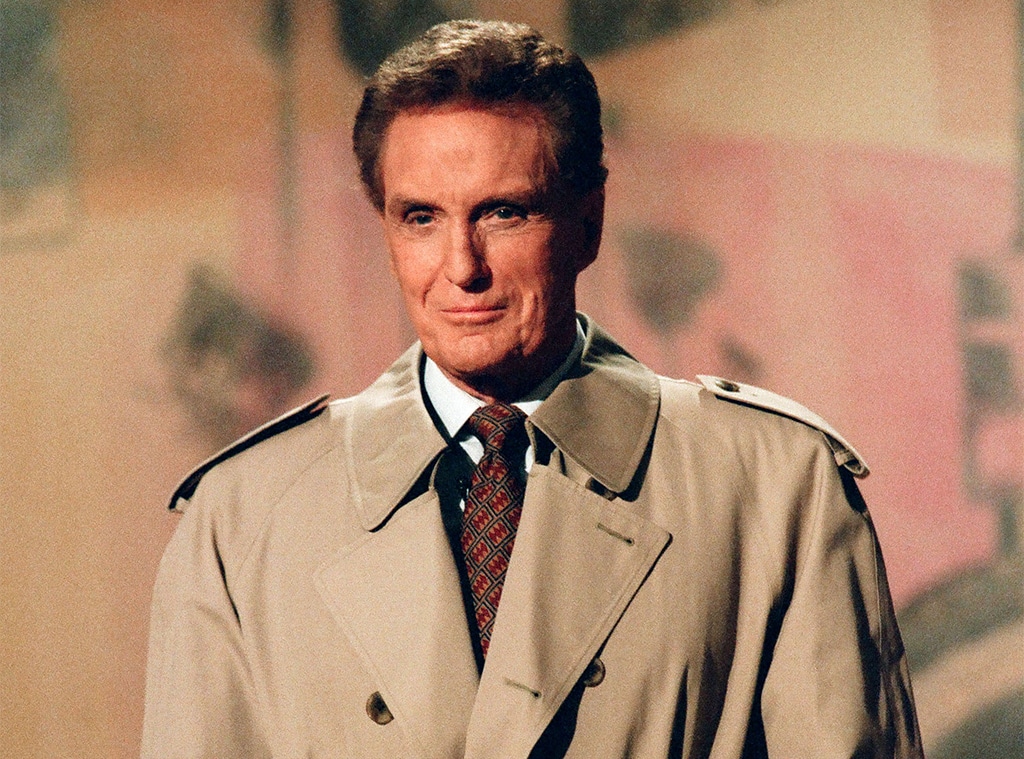 Margaret Norton/NBC/NBCU Photo Bank
Margaret Norton/NBC/NBCU Photo BankFor many, the appearance of Robert Stack, clad a trench coat, on a fog-filled soundstage could only mean one thing: They were home sick from school and watching an Unsolved Mysteries marathon, certain a mysterious fate was about to befall them in the middle of the day. Terry Dunn Meurer, co-creator of Unsolved Mysteries, has heard that scenario many times before.
"We have, actually, including from my children," Meurer laughed.
The series, which ran on and off and across a variety of networks including NBC, CBS and Lifetime from 1987-2010, is back with a new season on Netflix. Meurer, who co-created the series with John Cosgrove, returned to executive produce the 12 new episodes for the streamer alongside Stranger Things executive producer Shawn Levy. For the streamer, the format has been tweaked and the host is nowhere to be seen…unless you know where to look.
Below, get a rundown of how and why the show changed for Netflix, how updates will be given and why there's no host.
"We had always wanted to bring it back ever since it went off the air. There's just so many stories unsolved, unsolved cases that still need to be told. We feel that the Netflix streaming service and its global reach was just the perfect fit for Unsolved Mysteries, because we want to tell international stories and we want to be able to solve cases that can be solved internationally," Terry Dunn Meurer said. "In the past, with the original episodes, there were cases, especially wanted fugitives or missing people, who we found in other countries. So the global reach is really, really important to the brand. I mean, mostly just because we've never lost our passion for solving mysteries. It's just— it's what we do. That's what we've done and what we want to continue to do."
"We had a lot of discussions about that and just didn't feel that anyone could fill Robert Stack's shoes. The documentary world these days is primarily host-less. It's rare to see a host in a show like this," Meurer said.
When the original version was on, having a host was common, but the new episodes take a more documentary feel having "evolved beyond" the format featuring several cases per episode. "We included more archive, we used drone, we use steady-cam and tried to create a mysterious, creepy look using those...We didn't have those when we were doing this back in the day. [Laughs.] It was great to be able to use different equipment to create that mood as well," she said.
Robert Stack hosted the show from 1987-2002. The actor became synonymous with the show, so much so that they didn't feel like anybody could step into his shoes as serve as host. Virginia Madsen joined Stack as cohost in 1999 and when the show moved to Spike, Dennis Farina served as host. In the new opening credits on Netflix, Stack's image is seen over the title as an homage.
"I mean, he just brought so much to the [show]. He's one of the reasons I think it's so iconic and that it has been so successful all these years. He just was the perfect person to tell these stories. Such a beautiful, wonderful voice. He was very involved in the series too, he was a prince of a guy," Meurer said.
Along with losing the host and focusing on just one story per episode, the new Unsolved Mysteries scaled back on using the reenactments, despite how iconic some are from the original series.
"One of the conscious decisions was to let the people who the mysteries are about, have them be their own storytellers. So, we use their voices a lot more than we did in the previous episodes. We tried to develop them as characters so that the audience gets to know them a little bit more than we did in the old show. Those are all the conscious decisions," Meurer said.
"I think that with social media, if there are updates to these cases, I think we'll have to probably push them out on, on social media, and news and YouTube. We want to keep the shows as fresh as we can…So, I think we would certainly start with social media and because the shows are in...[20 languages] or something, there's a challenge of getting that information out to all the different countries because it's international," Meurer said. "We would leave that to Netflix to figure out how to do that, but we definitely want to keep the world updated on any leads that come along on these cases.
The main difference between Unsolved Mysteries and traditional true crime is what the very title of the show describes: "I think it's because the cases are unsolved," Meurer said.
"I think that it's a lot of the true crime that's out there, they're retelling cases that have already been adjudicated and have been solved. Our show, it's intriguing. It's intriguing on a different level. And I think there's a hope that the audience has, there's certainly a hope that the people that are involved in the episodes have that the cases will be solved. When we first started Unsolved Mysteries, we weren't sure that the audience was going to hang in there for four stories in one hour of where none of them have endings...We had our doubts about that, but then when the show started solving cases and we could put updates in, I think that's also what is intriguing, is that these cases actually could get solved. It gives people hope," she said.
The first six episodes of the new season of Unsolved Mysteries are now streaming on Netflix.